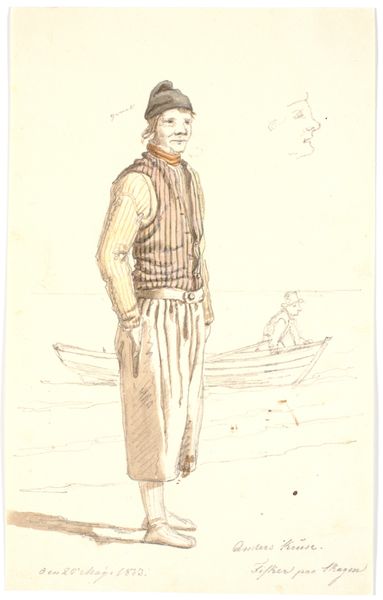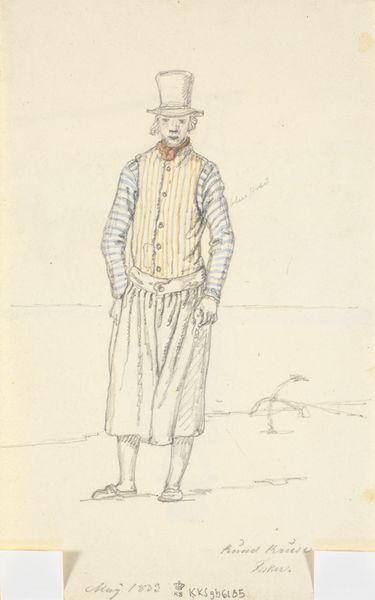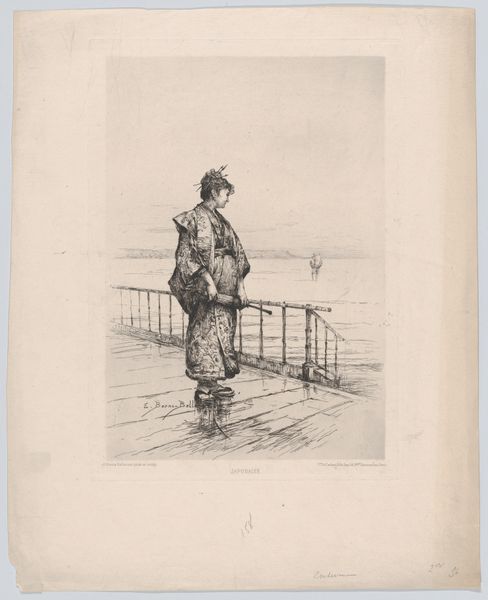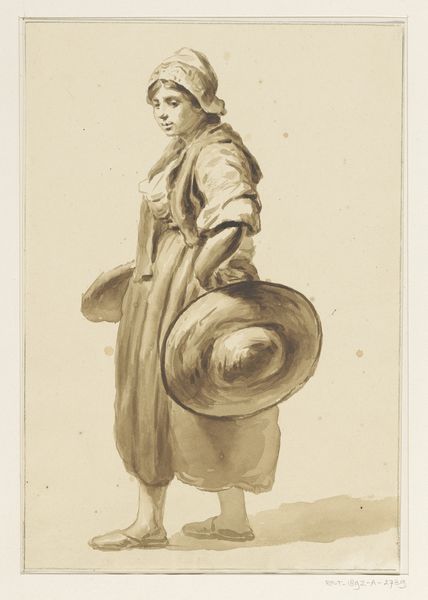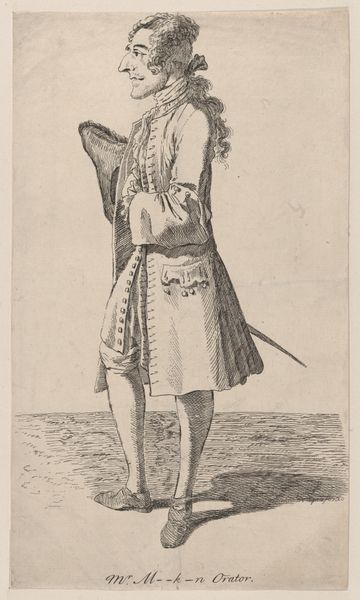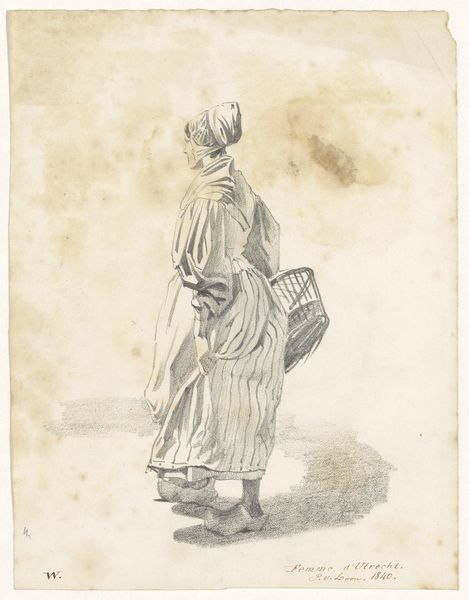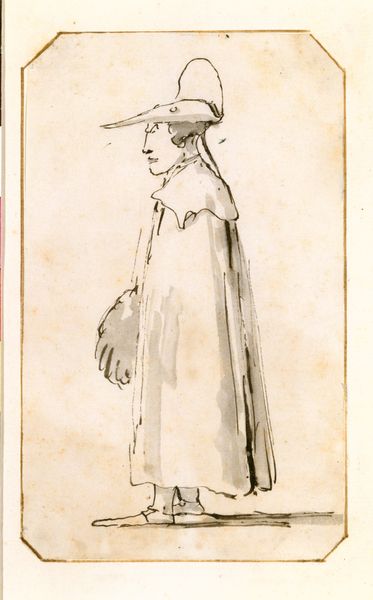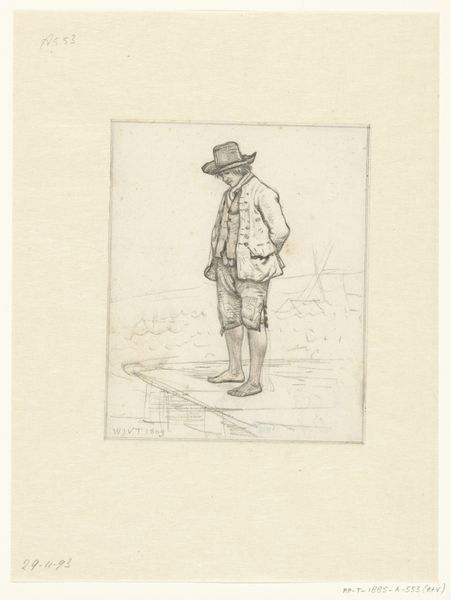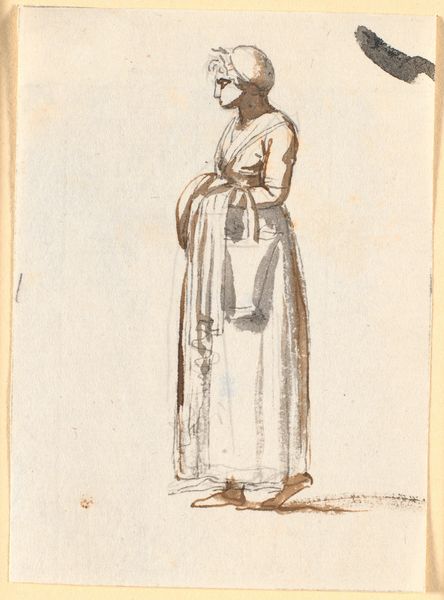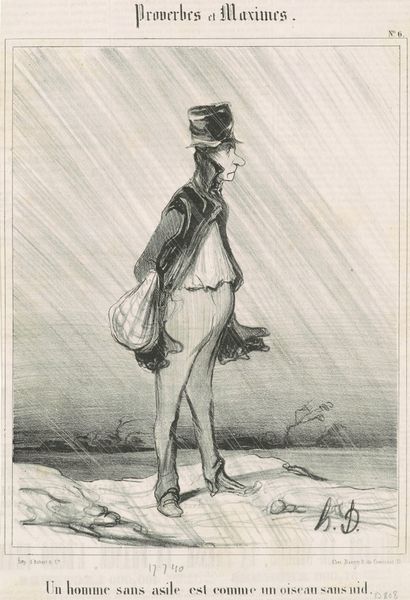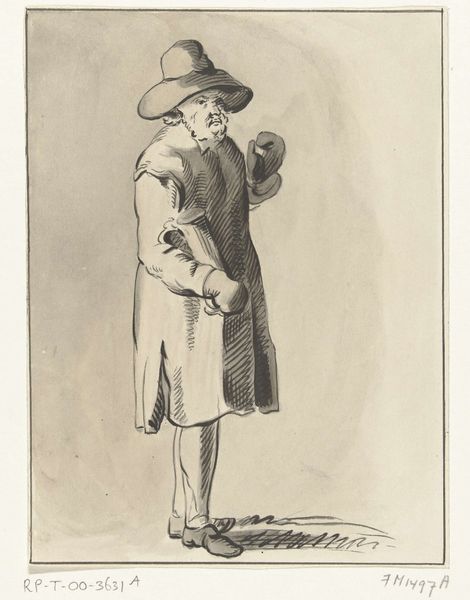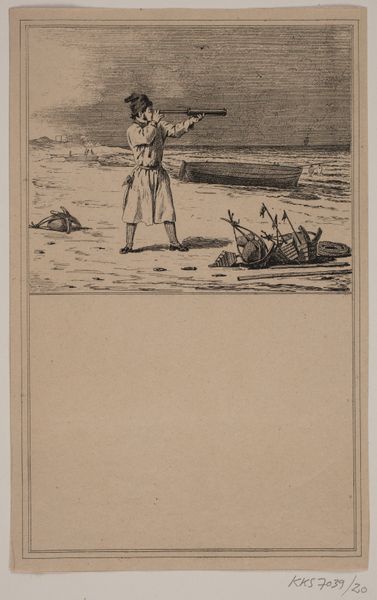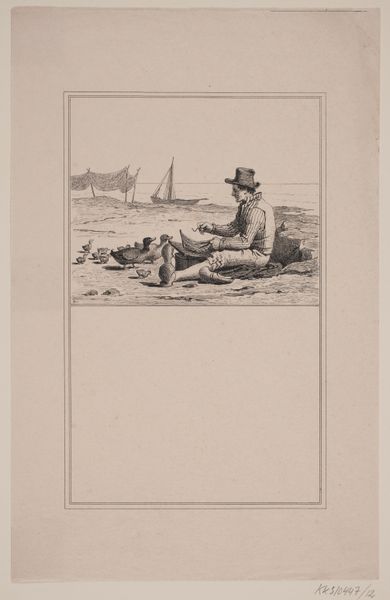
drawing, plein-air, watercolor
#
portrait
#
drawing
#
plein-air
#
pencil sketch
#
landscape
#
figuration
#
watercolor
#
romanticism
#
watercolour illustration
#
genre-painting
Dimensions: 243 mm (height) x 152 mm (width) (bladmaal)
Editor: Here we have "Saltepeer paa Skagen" from 1833, created with watercolor and pencil by Martinus Rørbye. The figure's direct gaze and somewhat unusual attire definitely caught my eye. What stands out to you in this work? Curator: The formal elements are quite striking. Note how the artist balances the verticality of the figure with the horizontal sweep of the coastline. The muted color palette, primarily earth tones and pale blues, creates a harmonious visual field. How does the figure’s pose influence your perception of the artwork's mood? Editor: I find his relaxed posture creates a casual, almost documentary feel, despite the formal portrait style. Does the contrast between the figure and landscape create any tension, or reinforce any meaning? Curator: Indeed. The figure’s central placement emphasizes a structural tension. Consider how the light catches the planes of his face and clothing. There’s an evident effort to capture the play of light and shadow which is reinforced by the details of the setting—the distant boats, the horizon line. It invites the eye to explore a structured composition. Editor: I hadn't thought of it that way! I was so focused on the subject. Curator: These contrasts reveal a careful manipulation of pictorial space. Now, how does this awareness of composition, form, and colour shift your overall experience? Editor: I see it now. By using visual techniques, Rørbye adds a subtle tension to what at first appears to be a simple scene. This helps to evoke deeper reflection. Curator: Precisely! Form is never separate from meaning.
Comments
No comments
Be the first to comment and join the conversation on the ultimate creative platform.
